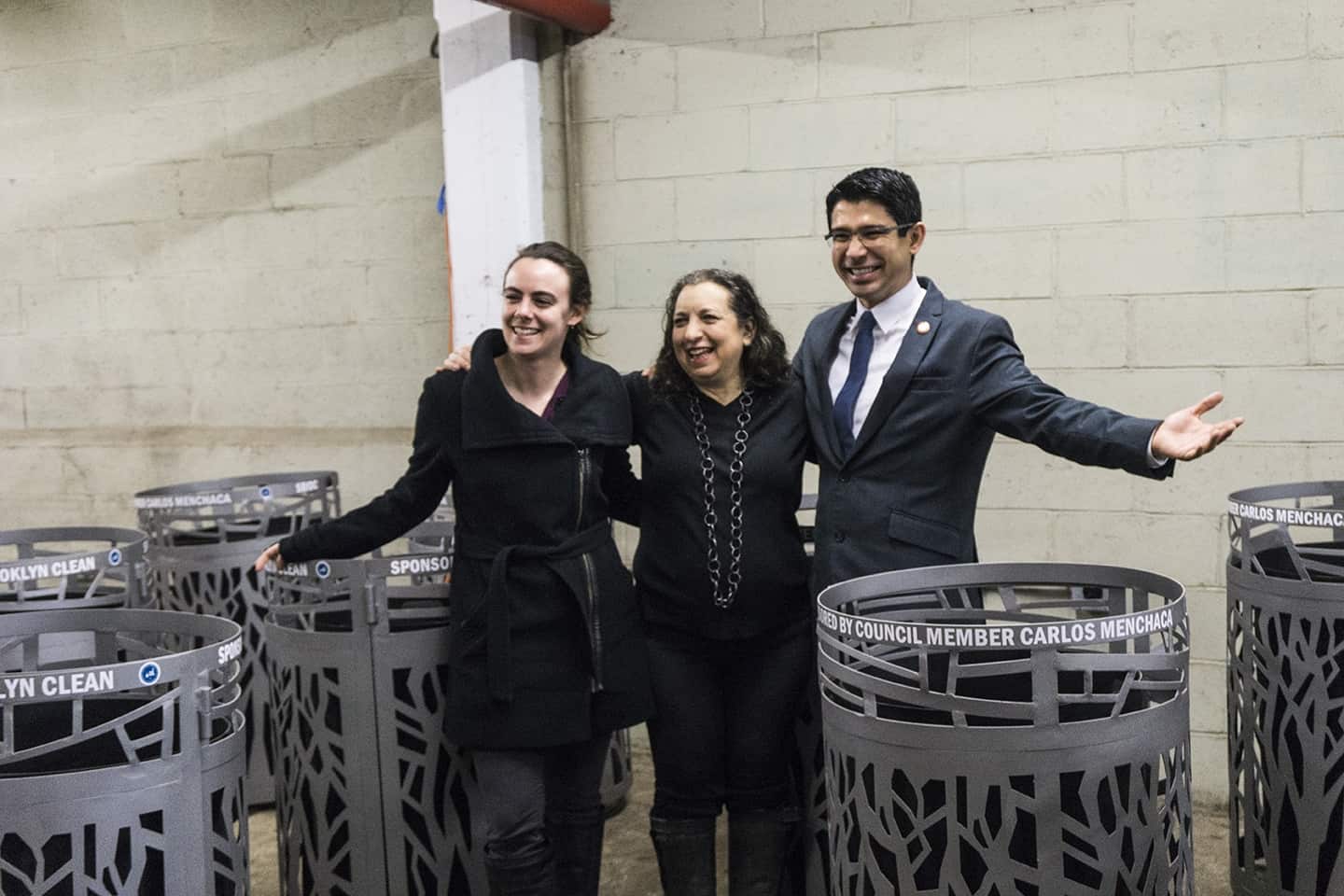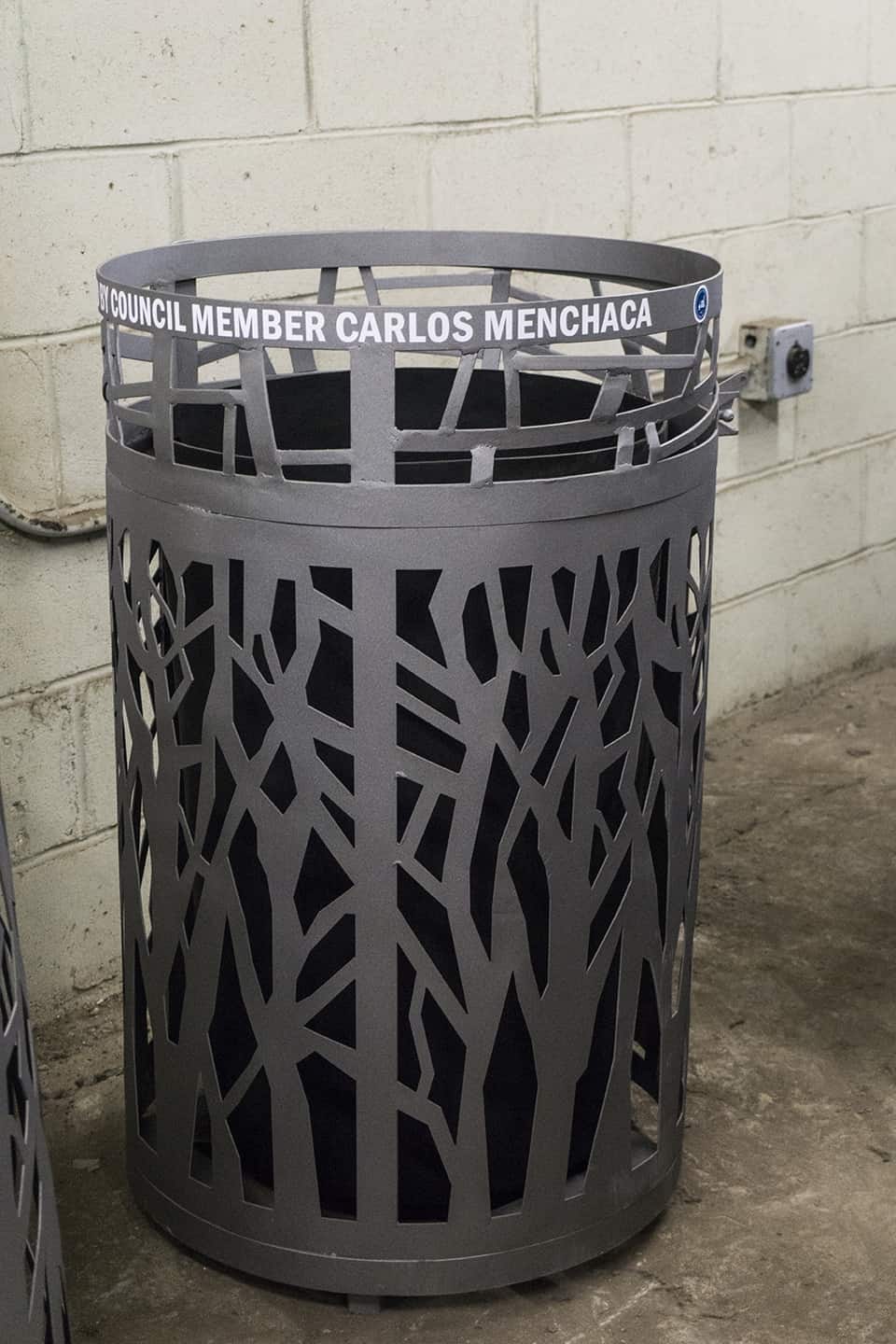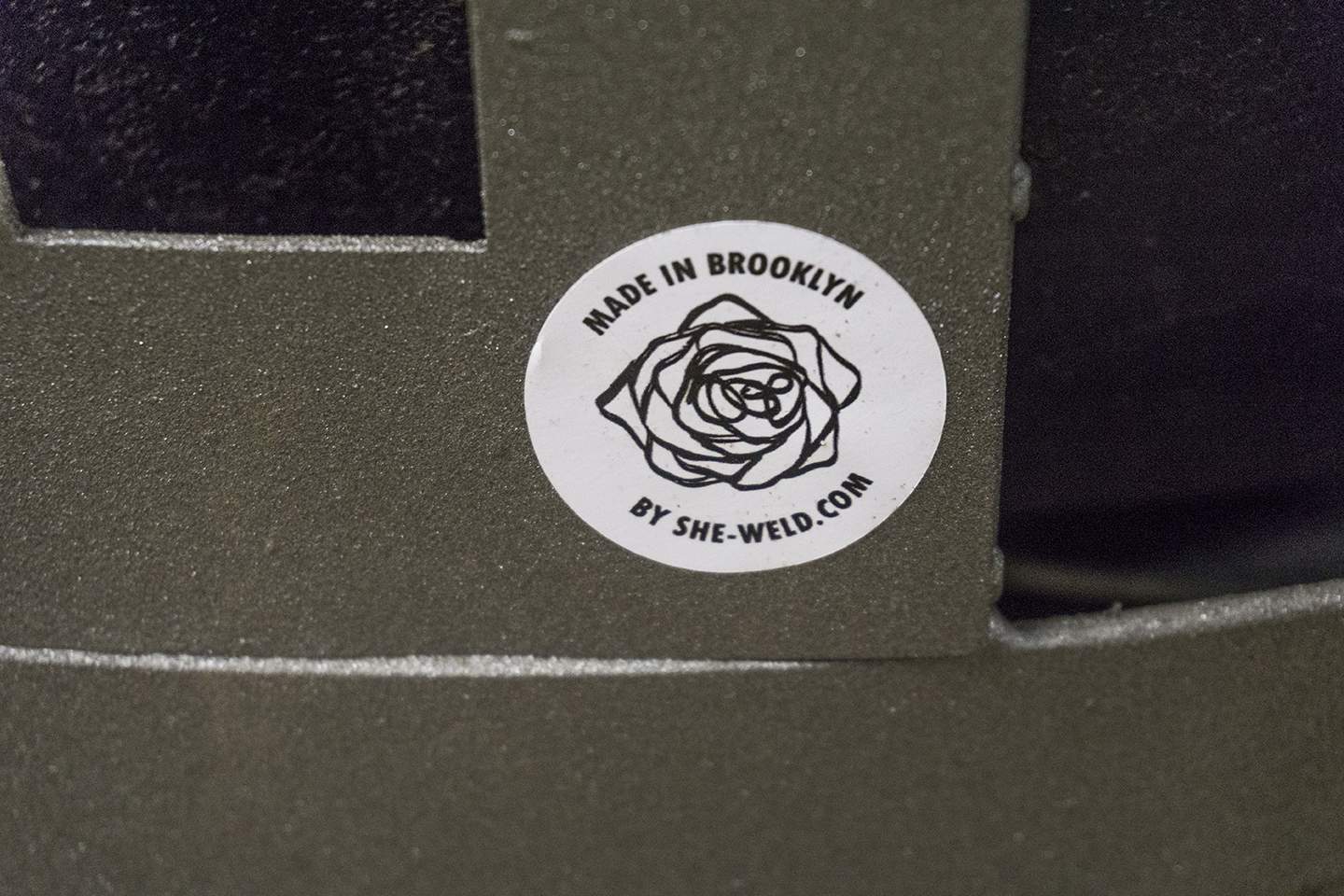
Marsha Trattner unveiled ten new garbage cans for Red Hook Tuesday morning at a press conference held by Councilman Carlos Menchaca and the South Brooklyn Industrial Development Corporation (SBIDC). The cans were handmade by Trattner to Department of Sanitation specifications, and will replace garbage cans along Van Brunt Street that were damaged by Hurricane Sandy.

The City Council has pool of discretionary funds that they give to sanitation related projects. SBIDC’s Jesse Solomon worked with Menchaca’s office to procure ten trash cans through Trattner’s company, She-Weld.
“We just thought her work is so beautiful, and it would be great to use trash cans as a way to have her work out in public,” said Solomon. “There are trash cans on [Van Brunt] Street right now, but they were really destroyed during Hurricane Sandy, so they look terrible. The latches have rusted and they just needed to be replaced.”
SBIDC’s mission is to advocate and promote for manufacturing in Brooklyn. The cans, which cost about $1,400 each, took about 10 months to coordinate, design, and fabricate. The old cans have been recycled. Menchaca praised this project as something other councilmembers can learn from.
“This is where government, a non-profit, a for-profit, art, and community got together to respond [to a need],” said Menchaca. “The work that went into this is going to actually create a model for other councilmembers to use their discretionary funding to help out not only communities that were damaged by Sandy, but also communities that just want artistic representation and awesome partnerships.”
Lorraine and Clinton Streets
 One press conference attendee asked why Van Brunt Streets cans are being replaced, when other commercial strips in Red Hook such as Lorraine and Clinton Streets don’t have any garbage cans at all. Solomon said that originally SBIDC had hoped to put cans in those places, but were unable to.
One press conference attendee asked why Van Brunt Streets cans are being replaced, when other commercial strips in Red Hook such as Lorraine and Clinton Streets don’t have any garbage cans at all. Solomon said that originally SBIDC had hoped to put cans in those places, but were unable to.
“Because we had to work within the confines of the Department of Sanitation, we were limited in where we could put these cans,” said Solomon. “We had to put them where the Department of Sanitation has a route.”
Asked why there was no route, Menchaca said that it is a long process.
“We are definitely looking into that,” said Menchaca. “The Department of Sanitation is one of the many partners in Red Hook… so we’re looking to them to look at routes. They know that that’s something that we’re looking at.”
Trash collection has long been a sore point in the area around the Red Hook Houses, as garbage often piles up along Columbia Street and other places.
She-Weld

She-Weld is a subterranean workshop on Van Dyke Street near Valentino Park and Pier. Like the Van Brunt Street garbage cans and much else in Red Hook, Trattner’s space was damaged by Sandy. In her studio she can fabricate or fix “pretty much anything anyone needs,” and also offers classes in welding, blacksmithing, and knifemaking. She said she really enjoyed this project.
“It was an interesting process to work with all the entities, to learn about the specs for making New York City trash cans, while also being creative with it,” said Trattner.
The panels for the cans were designed by Trattner but cut at Kammetal, another Red Hook business, before being assembled individually.
“There were some machine elements but there is also a handmade quality,” said Trattner. “Each one is slightly different, so they actually have maintained a unique handmade character.”
“I’m really excited to see these on the street, and being used.”








